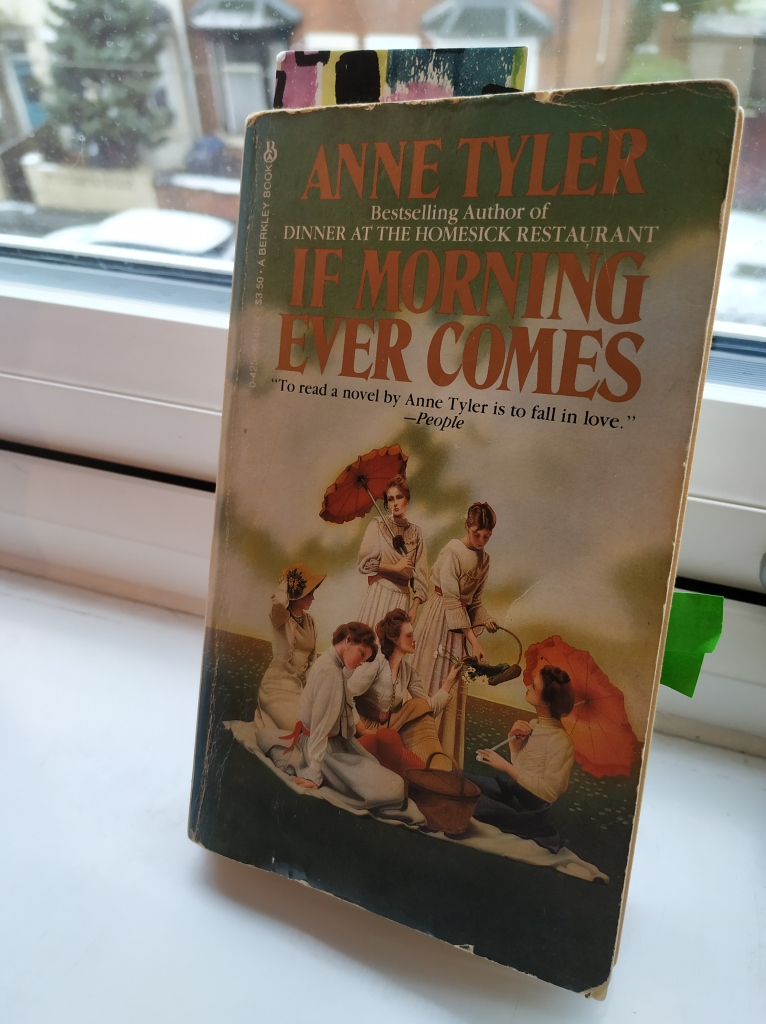 I bought this book as a result of reading “I Will not be Erased” by the gal-dem collective, for whom Charlie Brinkhurst-Cuff is deputy editor. As I read the pieces in that book, I mined the authors’ bios and anything mentioned in the text for more to read about People of Colour’s experiences in the UK. It formed part of the lovely book token splurge I indulged in in July last year. I had read several books about migration into the UK, and indeed about Windrush before (for example “Windrush” by Mike and Trevor Phillips, read but somehow not reviewed on here), which it turns out was more than a bit male-experience skewed). I pulled it off the end section of the front shelf of my TBR after feeling I’d had quite a surfeit of mid-20th-century White women’s writing for quite a lot of the month and wanting to redress the balance a bit, and I’m so glad I did.
I bought this book as a result of reading “I Will not be Erased” by the gal-dem collective, for whom Charlie Brinkhurst-Cuff is deputy editor. As I read the pieces in that book, I mined the authors’ bios and anything mentioned in the text for more to read about People of Colour’s experiences in the UK. It formed part of the lovely book token splurge I indulged in in July last year. I had read several books about migration into the UK, and indeed about Windrush before (for example “Windrush” by Mike and Trevor Phillips, read but somehow not reviewed on here), which it turns out was more than a bit male-experience skewed). I pulled it off the end section of the front shelf of my TBR after feeling I’d had quite a surfeit of mid-20th-century White women’s writing for quite a lot of the month and wanting to redress the balance a bit, and I’m so glad I did.
Charlie Brinkhurst-Cuff (ed.) – “Mother Country: Real Stories of the Windrush Children”
(20 July 2020, from Foyles with a book token)
Published in 2018, this collection of biographical pieces reflects both the life stories of original, second and third generation migrants to the UK from the Caribbean and their reactions to and interactions with the Windrush Scandal and the hostile environment engendered around it (as part of a ‘cracking down on illegal immigration’, the Conservative Government instigated a system in which people who had lived in the UK for most of or all of their lives were denied healthcare, employment, benefits and safety through absolutely no fault of their own, asked to prove identity that most White people probably couldn’t prove (can YOU prove where you went to primary school?), many of them being either driven to their graves or deported before it was uncovered by the Guardian newspaper among others, protests were made and some sort of redress is being tardily and shoddily sorted out. You can read more on the Joint Council for the Welfare of Immigrants website here).
David Lammy MP provides a moving and passionate Foreword, in which the personal is very much the political, where he runs through the workers, thinkers, creatives and sportspeople who have contributed so massively to British society and a careful outlining of how slavery and institutional racism in the Caribbean and the UK have fed into the current scandal, as well as giving a great summary of the book, paying special attention to the nuances of it:
The story of Windrush must not be sterilised, or overly simplified. It is not only a story of successful integration, sport and cultural icons, or even everyday heroes like my mother, any more than it is only a story of Home Office failure, of systemic racism, or the consequences of slavery. The story of Windrush is, like any other, a story of humanity. Of life, love, struggle, hope, misery, success and failure. But it’s one that is too often neglected in our media, which, I’m sad to say, is often whitewashed. This volume acts as a remedy to that failure of story-telling, which I ask you to both savour and share. (p. xxi)
Brinkhurst-Cuff’s Introduction makes the scope of the book clear: it’s not just one ship of people, but many, before and after Windrush; and it’s not just people of African heritage, but the descendants of Indian and Chinese indentured workers, too. I hadn’t completely gathered that before and the narratives around those people were fascinating and informative. She also contributes a piece on women of the Windrush era, seeking to balance the primarily male narratives and even images and restore the women made invisible – the balance is noticeable and appreciable in the texts that follow.
The stories that follow are mostly told to Brinkhurst-Cuff, some written by others. They are stories of incredibly diverse and rich heritages, of the importance of knowing where you come from and asking before it’s too late, of finding your place, of not being Black enough in communities in the UK, or not being Caribbean enough when you go back ‘home’ (or of being mistaken for a deportee when owning an English accent on a Caribbean island). Working class, female, LGBTQ and Black identities intersect and we are introduced to communities and families all over England in this powerful and important book which should be required reading. There is joy here as well as struggle, fulfilling the call in “Loud Black Girls” for joy to also be shared, and there are indeed both ‘good’ and ‘bad’ immigrants given space here, showing and celebrating a huge range of experiences and behaviours.













Recent comments